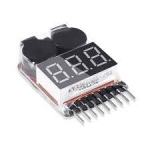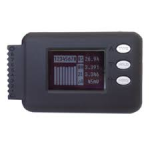I'm asking about the small 8S lipo alarms used to monitor lipo packs, and how they are powered. I received two new lipos yesterday and a couple of lipo alarms. I connected the alarms to the balancing leads and the cells were at a storage voltage and balanced within a 0.01V. I left the alarms plugged in, planning to charge the packs up in the morning and check that they are staying balanced in case there's a warranty issue.
At 3AM I hear both alarms going off. I unplugged them and decided to check more closely in the morning. What I found is that both packs had cell 1 and 2 below 3V, while the other 5 cells in each pack were at the storage voltage they arrived with. The packs are 5Ah, so I was surprised the alarms could draw so much power so quickly. I don't recall this happening with my other alarms or packs. Any ideas of what's going on, and if it's normal?
At 3AM I hear both alarms going off. I unplugged them and decided to check more closely in the morning. What I found is that both packs had cell 1 and 2 below 3V, while the other 5 cells in each pack were at the storage voltage they arrived with. The packs are 5Ah, so I was surprised the alarms could draw so much power so quickly. I don't recall this happening with my other alarms or packs. Any ideas of what's going on, and if it's normal?







